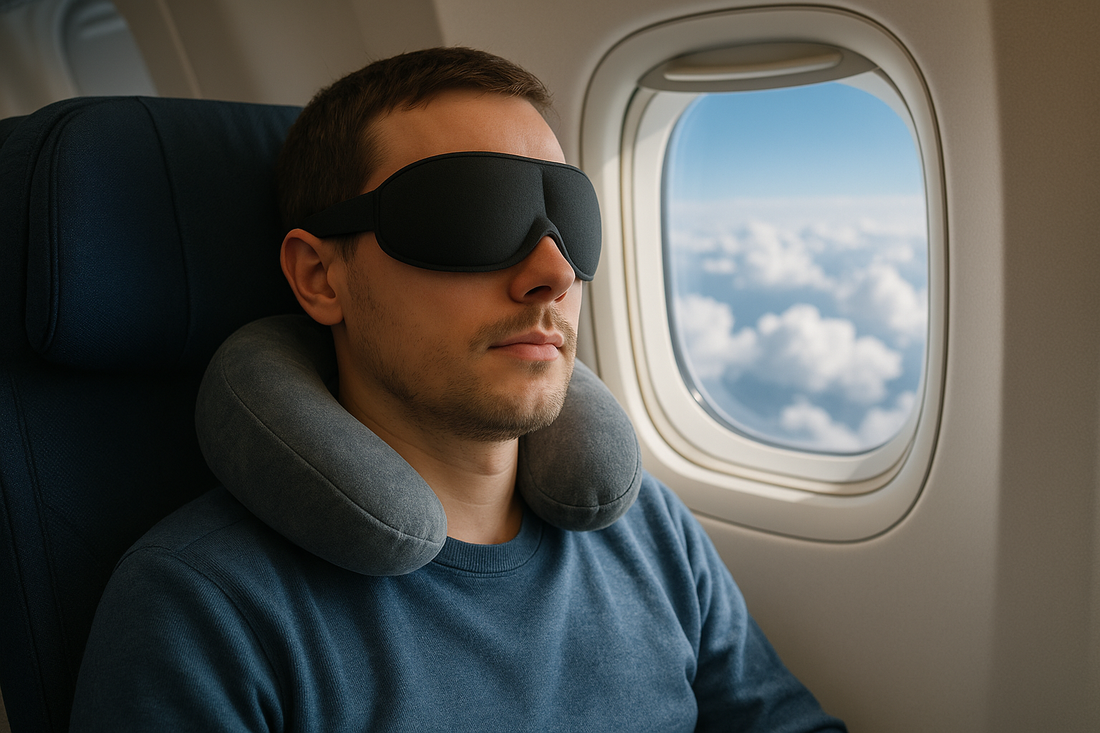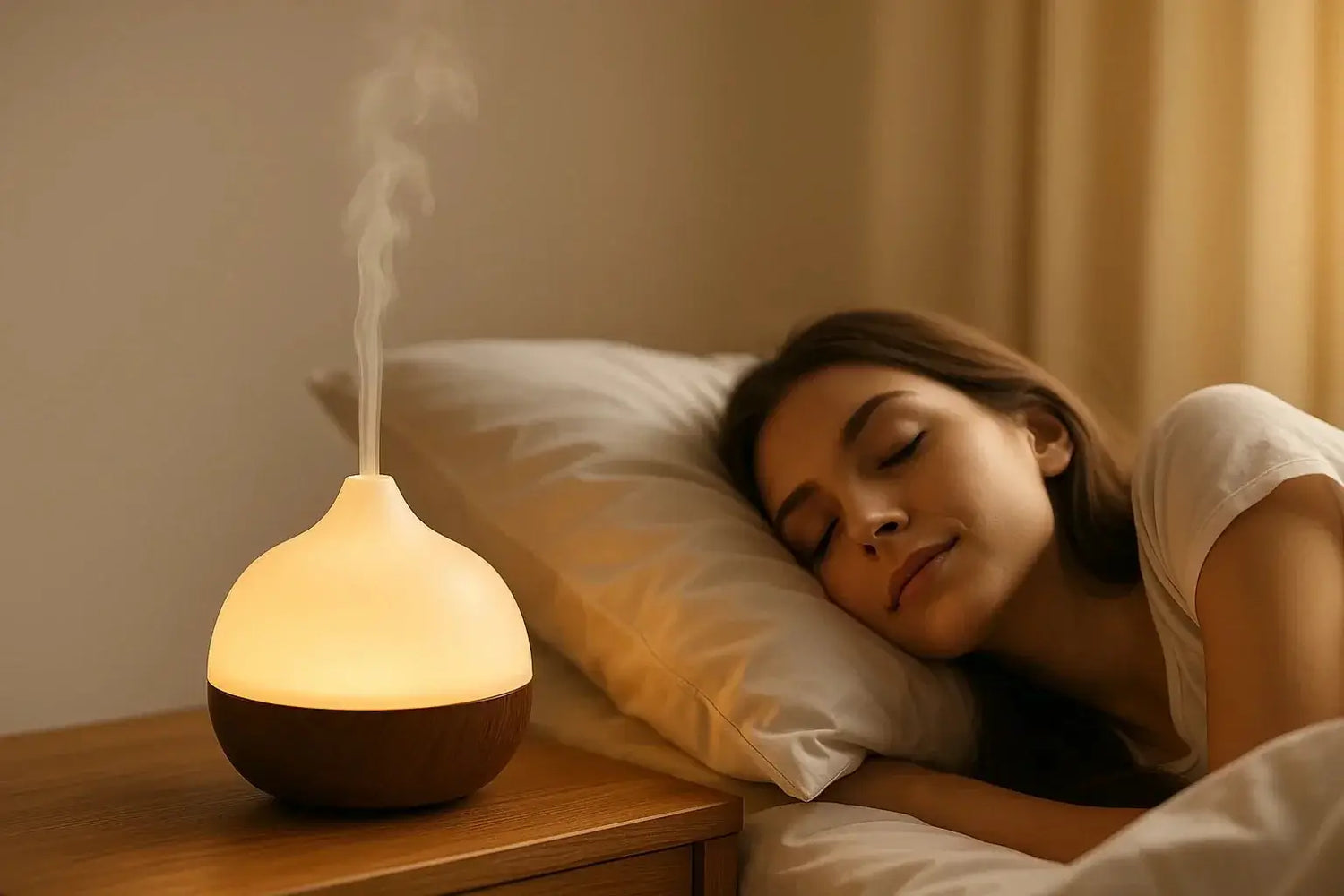
How to Sleep on a Plane: 15 Expert Tips (2025)
Share
We've all experienced the struggle of trying to catch some sleep while crammed into an airplane seat. Many of us know that the key to feeling refreshed and ready to tackle our destination is a good night's sleep, but sleeping on a plane can be tricky. Between the noise of the engines, the cramped seating, and the constant movement of passengers, it can feel almost impossible to find rest. But don't despair! With the right strategies, you can learn how to maximize your comfort and get some quality shut-eye while flying. In this article, we’ll guide you through 15 expert tips to help you sleep better on your next flight. Let's dive in and transform your travel experience!
1. Choose Your Seat Wisely
The first step in preparing for sleep on a plane is selecting the right seat. Window seats are often the best option, as they allow you to lean against the wall for extra support. Additionally, being next to the window means you won’t have to constantly get up to let others out. If you can, avoid seats near the galley or bathrooms where foot traffic and chatter can be disruptive.
2. Plan Your Flight Timing
When booking your flight, consider timing that aligns with your natural sleep pattern. Evening or red-eye flights can work wonders for long-haul trips, allowing you to go to sleep at your usual time. If you can choose a flight that leaves in the late evening or overnight, you'll be on your way to better sleep.
3. Invest in a Quality Sleep Mask
Light can be one of the biggest culprits when it comes to sleep disruption. A high-quality sleep mask is essential for blocking out the glare of cabin lights and sunlight. For this purpose, consider the 3D Sleep Mask from QuietAura. It’s designed to fit snugly over your eyes, offering complete blackout coverage so you can drift off uninterrupted.
4. Stay Hydrated
Airplanes are notorious for their dry cabin air, which can make your throat scratchy and lead to discomfort. Staying hydrated is crucial, so drink plenty of water before the flight and during the journey. Aim for at least 8 ounces of water for every hour you’re in the air. Avoiding caffeinated and alcoholic beverages can also help keep you feeling fresh and ready to sleep.
5. Bring Your Own Pillows
One of the best investments for a more comfortable flight is a travel neck pillow. These pillows offer crucial support for your neck and head, helping you avoid painful stiffness that can come from awkward sleeping positions. Look for one that fits comfortably in your carry-on so you always have it on hand.
6. Dress Comfortably
What you wear on a flight can significantly impact your comfort level. Opt for loose-fitting clothes made from breathable materials such as cotton. Dress in layers so you can adapt to the varying temperatures within the cabin. Being dressed comfortably will help you relax and make it easier to doze off.
7. Use Noise-Canceling Headphones
Noise is another major barrier to sleeping on a plane. To combat this, invest in a good pair of noise-canceling headphones or use earplugs. These tools can help drown out engine noise and the chatter of fellow passengers, creating a quieter environment conducive to sleep.
8. Try Breathing Exercises
Relaxation techniques can be highly effective for calming your mind and body. Practicing deep breathing exercises can make a substantial difference in your ability to fall asleep. One popular technique is the 4-7-8 method: inhale for 4 seconds, hold your breath for 7 seconds, and exhale for 8 seconds. Repeat this cycle several times to help soothe yourself into slumber.
9. Limit Caffeine and Alcohol
While it might be tempting to indulge in a pre-flight coffee or a glass of wine, both caffeine and alcohol can disrupt your sleep cycle. Opt for herbal teas or plain water instead. Herbal teas like chamomile can be particularly calming and promote relaxation, setting the stage for sleep.
10. Create a Sleep-Inducing Environment
Sometimes, replicating your home sleep environment can work wonders. Consider bringing along an USB Mini Humidifier from QuietAura to help add moisture to the dry cabin air. This can alleviate discomfort and create a more soothing atmosphere, supporting better sleep as you fly.
11. Set an Alarm
If you're worried about oversleeping and missing your destination, don’t hesitate to set an alarm on your phone. Just remember to keep your device in airplane mode. Knowing you have an alarm set can ease your mind, allowing you to relax and drift into sleep without the worry of losing track of time.
12. Use an Amber Reading Light
If you feel the need to read before settling into sleep, opt for a gentle, warm light to avoid overly stimulating your eyes. The Amber Reading Light from QuietAura is perfect for this purpose. It provides just the right amount of illumination without disturbing your fellow passengers, allowing you to ease into sleep mode.
13. Be Mindful of Your Sleep Position
Your sleeping position can greatly affect your comfort level on a plane. Experiment with different positions—leaning forward, tilting to the side, or adjusting your neck pillow might help alleviate tension and find that sweet spot where you can comfortably doze off.
14. Avoid Overpacking Your Carry-On
A cramped overhead bin or under-seat space can lead to a cramped experience overall. Avoid overpacking your carry-on bag so you can easily access your essentials, including any sleep aids like your travel pillow or sleep mask. Keeping your space organized allows you to better focus on relaxing rather than wrestling with your belongings.
15. Practice Relaxation Techniques
If sleep eludes you, take a moment to calm your mind with meditation or light stretching. Many people find that incorporating mindfulness exercises or soft, calming music can make it easier to drift off. Use your phone (in airplane mode) to access meditation apps that guide you through calming practices, helping to set the stage for rest.
Conclusion
By following these expert tips, you can transform your flying experience into a more restful one. With careful planning—from choosing the right seat to maximizing comfort with quality accessories from QuietAura—you can significantly improve your chances of sleeping on a plane. Say goodbye to those dreaded sleepless flights, and hello to more invigorating travel experiences. Remember, traveling doesn't have to be exhausting; with a little effort, you can arrive at your destination feeling refreshed and ready to explore!
FAQs About Sleeping on a Plane
1. Is it safe to sleep on a plane?
Yes! Sleeping on a plane is generally safe. Just be mindful of your surroundings and stay aware of any announcements, particularly during boarding and landing.
2. Can I sleep at cruising altitude?
Definitely! Many passengers successfully sleep during the cruising phase of the flight. Just follow the tips mentioned above to maximize your chances of falling asleep.
3. What should I do if I can’t fall asleep?
If sleep escapes you, try changing positions or engaging in calming activities like deep breathing or reading. However, avoid anything too stimulating that might keep you awake.
4. How can I avoid jet lag?
Adjusting your sleep schedule prior to travel, staying hydrated, and avoiding excessive caffeine and alcohol can help your body adapt to new time zones more easily.
5. Should I wear socks on a plane?
Wearing socks can definitely enhance your comfort, especially on long flights where your feet might get chilly. Compression socks can also help improve circulation during travel.
By incorporating these tips and tricks into your travel routine, you can significantly improve your ability to sleep while flying. Happy travels!

